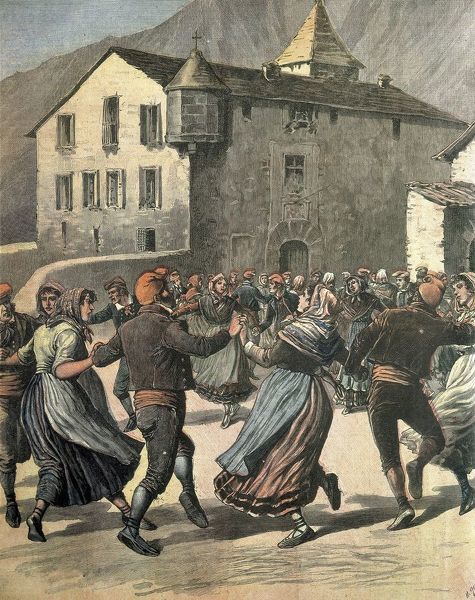Difference between revisions of "Andorra"
Tao alexis (talk | contribs) |
Tao alexis (talk | contribs) |
||
| Line 25: | Line 25: | ||
{| class="wikitable" style="float:left; margin-right: 25px; text-align: left; background-color:#F7E7CE;" | {| class="wikitable" style="float:left; margin-right: 25px; text-align: left; background-color:#F7E7CE;" | ||
|- | |- | ||
| − | ! style="width: 85px|Locality !! style="width: 215px"| | + | ! style="width: 85px"; rowspan="2"|Locality !! colspan=4|Product References |
| + | |- | ||
| + | ! style="width: 65px"|Market !! style="width: 215px"|Mining !! style="width: 215px"|Processing !! style="width: 215px"|Agriculture | ||
|- | |- | ||
| − | | Andorra la Vella (village) || | + | | Andorra la Vella (village) || yes |
|- | |- | ||
| − | | Andorra (principality) || | + | | Andorra (principality) || || iron, lead || beech wood, beef, cheese, smoked ham || barley, cattle<sub>(3)</sub>, livestock, mules, oats, poultry & eggs, sheep, swine, tobacco |
|} | |} | ||
[[Category: Places in France]][[Category: Reviewed]] | [[Category: Places in France]][[Category: Reviewed]] | ||
Revision as of 00:51, 30 October 2023
The Principality of Andorra is an independent landlocked state situated in the eastern Pyrenees Mountains nestled between the Kingdoms of France and Spain. This region was historically renowned for its involvement in smuggling taxable goods into France and Spain, utilizing methods such as forgery and the black market.
Contents
Andorrans enjoy a notably low tax burden, but they are obligated to pay a modest tribute every two years to both the Bishop of Urgel and the King of France. The Bishop of Urgel receives offerings like pesetas, hams, chickens and cheeses, while the King of France is entitled to an ancient fee.
The Principality covers an area of 1.5 hexes and has a population of 1,670. It borders on Counties of Foix and Urgel, the Marquesate of Lerida Lerida and the county of Couserans.
Geography
Andorra consists predominantly of rugged mountains, featuring the predominantly high peak, Coma Pedrosa, reaching 9,652 feet. The small region is dissected by narrow valleys that channel the flow of the main stream, the Gran Valira, which flows out into Urgel. A small portion in the northwest of the principality drains into neighboring France. This rugged terrain made Andorra a natural fortress, shaping the region's historical and cultural identity.
History
The region is the sole surviving vestige of the Spanish March, a defensive region established by Charlemagne in 795 to shield Christian France from the advance of the Moors. According to tradition, Charlemagne is revered as the founding figure of the nation, and it was his son, Louis the Pious, who initially bestowed upon the inhabitants their cherished charter of liberty, known as the Andorran "Magna Carta."
The unique independence of Andorra traces its origins back to a thirteenth-century dispute between the Spanish Bishop of Urgel and the French Count of Foix, culminating in a pivotal agreement in 1278, known as the Pariatjes, which partitioned the country between them. Remarkably, this compact still endures today, serving as a testament to the principality's enduring historical legacy.
Settlements
| Name | Population | Year founded |
|---|---|---|
| Andorra la Vella | 167 | 988 |
References
| Locality | Product References | |||
|---|---|---|---|---|
| Market | Mining | Processing | Agriculture | |
| Andorra la Vella (village) | yes | |||
| Andorra (principality) | iron, lead | beech wood, beef, cheese, smoked ham | barley, cattle(3), livestock, mules, oats, poultry & eggs, sheep, swine, tobacco | |
